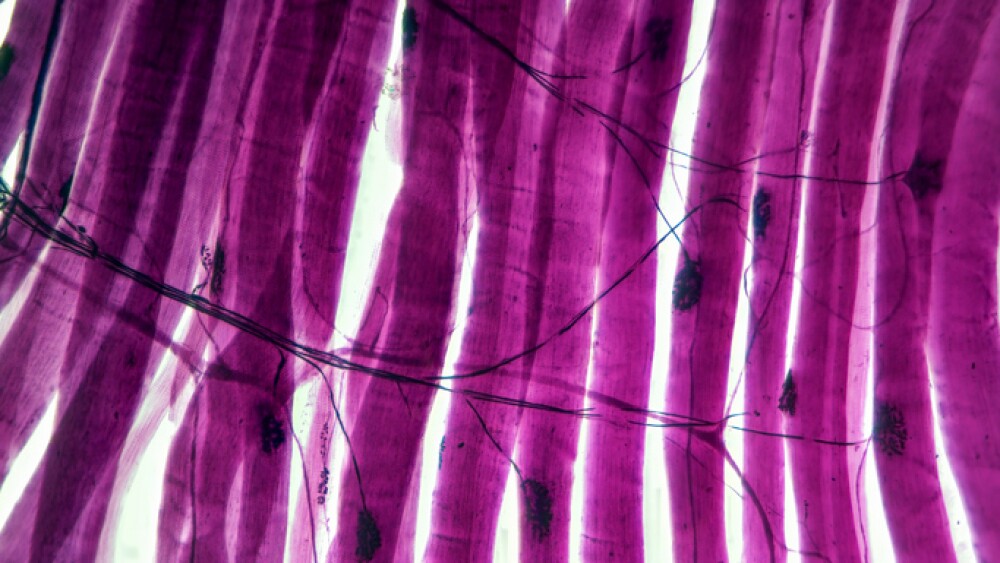Global Blood Therapeutics, Inc. announced its support for the Sickle Cell Disease Treatment Centers Act of 2022, which was introduced and, if passed in its current form, would authorize for appropriations of $535 million in annual funding to support sickle cell disease treatment, research and education.
Congress Moves to Expand Funding for National Network of Specialized Treatment Centers and Community Organizations for Sickle Cell Disease Patients
SOUTH SAN FRANCISCO, Calif., Sept. 15, 2022 (GLOBE NEWSWIRE) -- Global Blood Therapeutics, Inc. (GBT) (NASDAQ: GBT) announced its support for the Sickle Cell Disease Treatment Centers Act of 2022, which was introduced today and, if passed in its current form, would authorize for appropriations of $535 million in annual funding to support sickle cell disease (SCD) treatment, research and education. The new legislation is sponsored by Congresswoman Barbara Lee of California, Congressman Danny Davis of Illinois, Senator Chris Van Hollen of Maryland and Senator Cory Booker of New Jersey. The bill would create a national network of SCD treatment centers in which healthcare providers and community-based organizations partner to optimize care delivery, including psychological support, while implementing tools that boost education, coping and disease understanding by patients and families. The bill focuses on patient care, with data collection and research as additional positive benefits.
“Sickle cell disease has long suffered from a lack of attention, investment and innovation, resulting in a lack of access to high-quality health care for those living with this devastating condition. Since our founding, GBT has been committed to partnering with the community to address and overcome these health inequities. The introduction of the Sickle Cell Disease Treatment Centers Act of 2022 marks a significant step toward equitable access for the sickle cell community by potentially creating the infrastructure of coordinated care that is so desperately needed, in addition to increasing education and broader community support,” said Ted W. Love, M.D., president and CEO of GBT. “We commend Congresswoman Lee, Congressman Davis, Senator Van Hollen and Senator Booker for their dedication and efforts to bring this legislation forward, which we wholeheartedly support.”
If enacted, the bill will establish a national network of SCD treatment centers based on a hub-and-spoke model connected through national/regional coordinating centers, along with funding for at least 128 treatment centers and 100 community-based organizations or nonprofit entities. The national/regional coordinating centers will facilitate data collection, monitoring and distribution, serve as a repository of best practice guidelines, facilitate publication of research and educational materials, as well as promote public awareness campaigns and other outreach materials that broaden community support.
Approximately 100,000 Americans currently live with SCD.1 Despite the need for consistent and coordinated treatment, few people with SCD have access to multidisciplinary care teams.2 The life expectancy of people with SCD is two to three decades shorter than the rest of the population due, at least in part, to limited access to specialized care.3
The Council for Sickle Cell Disease Health Equity, an advisory council convened by GBT to help drive a unified national advocacy agenda, worked with the sponsors to develop the Sickle Cell Disease Treatment Centers Act of 2022.
“The key elements of the Sickle Cell Disease Treatment Centers Act of 2022 are based on a vision developed by a diverse group of stakeholders representing individuals living with sickle cell disease, caregivers, advocates, community-based organizations, physicians, and payers. The introduction and passing of this act have the potential to dramatically improve the lives of individuals living with sickle cell disease across the United States,” said Biree Andemariam, M.D., director of the New England Sickle Cell Institute at the University of Connecticut and the chairperson of The Council for Sickle Cell Disease Health Equity. “The establishment and funding of more than 100 treatment centers would ensure far greater access to quality expert care for those living with sickle cell disease around the country, filling a longstanding inequity and largely ignored gap in the current healthcare landscape for the sickle cell disease community.”
About Sickle Cell Disease
It is estimated that more than 100,000 people in the United States,1 52,000 people in Europe,4 up to 100,000 people in Brazil,5 and millions of people throughout the world have sickle cell disease (SCD).1 SCD occurs particularly among those whose ancestors are from sub-Saharan Africa, though it also occurs in people of Hispanic, South Asian, Southern European and Middle Eastern ancestry.1 SCD is a lifelong inherited blood disorder that impacts hemoglobin, a protein carried by red blood cells that delivers oxygen to tissues and organs throughout the body.6 Due to a genetic mutation, individuals with SCD form abnormal hemoglobin known as sickle hemoglobin. When sickle hemoglobin becomes deoxygenated, it polymerizes to form rods, which deforms the red blood cells into sickled – crescent-shaped, rigid – cells.6-8 The recurrent sickling process causes destruction of the red blood cells, hemolysis and anemia (low hemoglobin due to red blood cell destruction), which drives vascular inflammation contributing to blockages in capillaries and small blood vessels (vaso-occlusion) that impede the flow of blood and oxygen delivery throughout the body. Episodes of painful vascular occlusions are commonly referred to as vaso-occlusive crises (VOCs). The diminished oxygen delivery to tissues and organs can lead to life-threatening complications, including stroke and irreversible organ damage.7-11 Complications of SCD begin in early childhood and can include neurocognitive impairment, acute chest syndrome, and silent and overt stroke, among other serious issues.12 Early intervention and treatment of SCD have shown potential to modify the course of this disease, reduce symptoms and events, prevent long-term organ damage, and extend life expectancy.7
About Global Blood Therapeutics
Global Blood Therapeutics, Inc. (GBT) is a biopharmaceutical company dedicated to the discovery, development and delivery of life-changing treatments that provide hope to underserved patient communities, starting with sickle cell disease (SCD). Founded in 2011, GBT is delivering on its goal to transform the treatment and care of SCD, a lifelong, devastating inherited blood disorder. The company has introduced Oxbryta® (voxelotor), the first FDA-approved medicine that directly inhibits sickle hemoglobin (HbS) polymerization, the root cause of red blood cell sickling in SCD. GBT is also advancing its pipeline program in SCD with inclacumab, a P-selectin inhibitor in Phase 3 development to address pain crises associated with the disease, and GBT021601 (GBT601), the company’s next generation HbS polymerization inhibitor. In addition, GBT’s drug discovery teams are working on new targets to develop the next wave of potential treatments for SCD. To learn more, please visit www.gbt.com and follow the company on Twitter @GBT_news.
References
- Centers for Disease Control and Prevention. Sickle Cell Disease Data and Statistics (SCD). https://www.cdc.gov/ncbddd/sicklecell/data.html. Accessed June 7, 2022.
- Grosse SD, et al. Pediatrics. Pediatrics. 2009;123(1):407–412.
- Lee L, et al. Public Health Rep. 2019;134(6):599–607.
- European Medicines Agency. https://www.ema.europa.eu/en/medicines/human/orphan-designations/eu3182125. Accessed June 12, 2022.
- Ministério da Saúde (Brasil), Protocolo Clínico e Diretrizes Terapêuticas da Doença Falciforme, Feb. 19, 2018
- National Heart, Lung, and Blood Institute. Sickle Cell Disease. https://www.nhlbi.nih.gov/health-topics/sickle-cell-disease. Accessed February 23, 2022.
- Kato GJ, et al. Nat Rev Dis Primers. 2018;4:18010.
- Rees DC, et al. Lancet. 2010;376(9757):2018-2031.
- Kato GJ, et al. J Clin Invest. 2017;127(3):750-760.
- Caboot JB, et al. Paediatr Respir Rev. 2014;15(1):17-23.
- Nader E, et al. Front Immunol. 2020 Mar 13;11:454.
- Kanter J, et al. Blood Rev. 2013 Nov;27(6):279-87.
Contact:
Steven Immergut (media)
+1 650-410-3258
simmergut@gbt.com
Courtney Roberts (investors)
+1 650-351-7881
croberts@gbt.com






